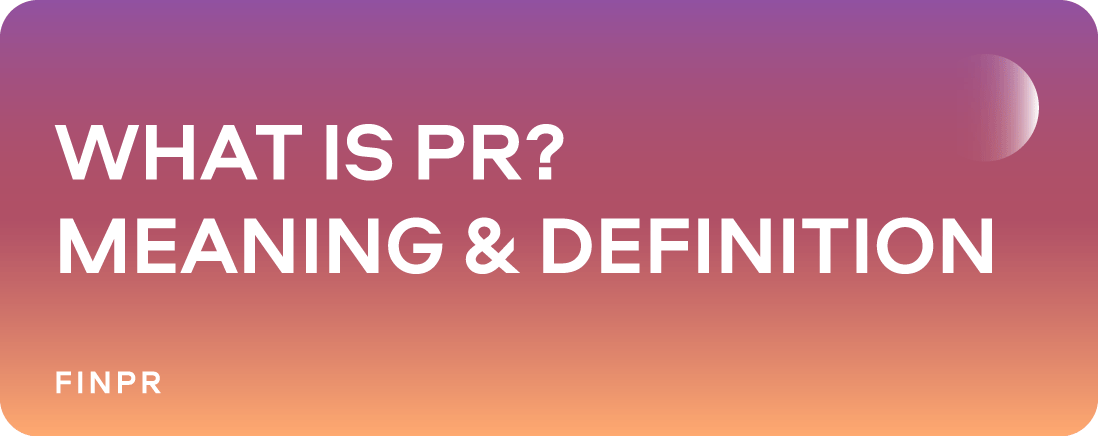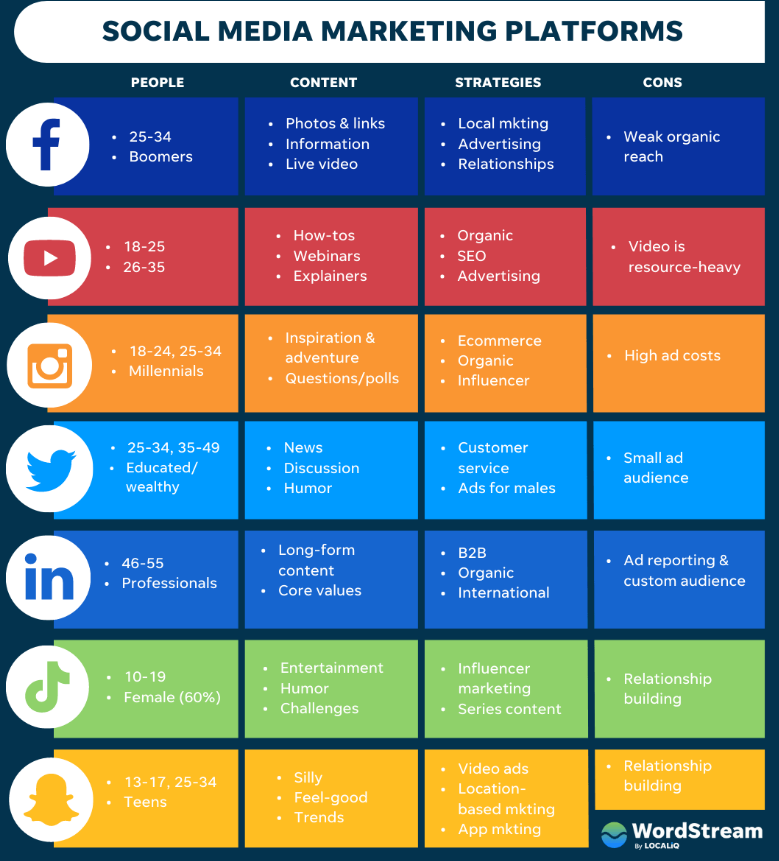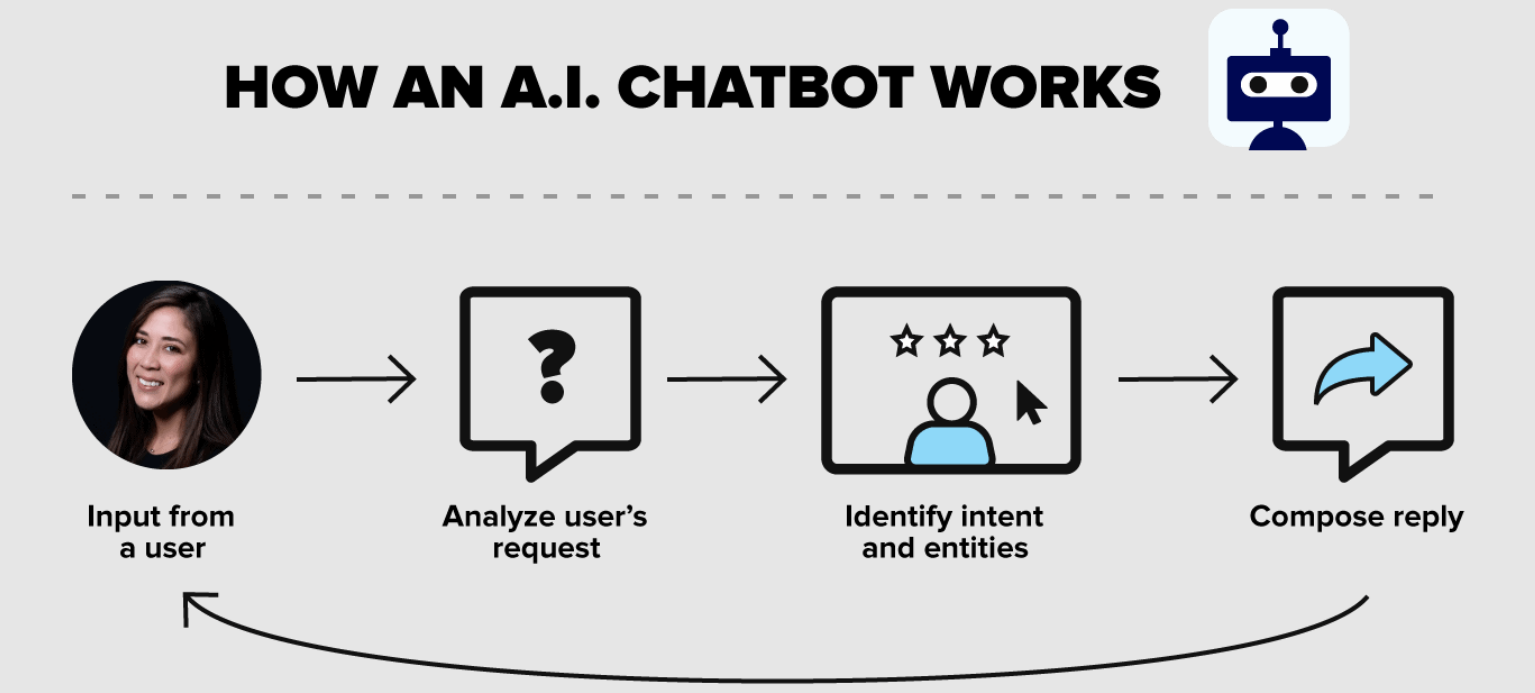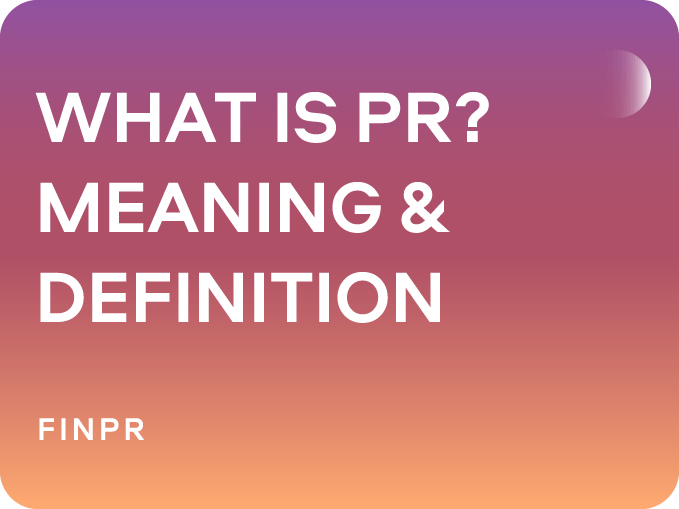
Ever found yourself amidst a conversation about a brand's reputation or its media relations with its audience? Chances are, you were discussing the realm of Public Relations or, as most of us know it, PR.
In today's rapidly evolving business landscape, PR stands tall as the bridge between companies and their publics. It's the art and science of storytelling, where brands communicate their values, visions, and victories. And let's be real. In an age where reputation can make or break a company overnight, understanding public relations becomes not just an asset, but a necessity.
Breaking Down the Term
There's oftentimes a disconnect between what people think public relations is and what public relations actually is, so this is a very common misnomer. Public relations might seem like a straightforward concept at first glance, but it's a multifaceted gem in the world of business communication. When you hear "Public Relations," what comes to mind? At its core, 'Public Relations' revolves around two pivotal words: 'Public' and 'Relations'.
Now, let’s think about the word 'Public'. This isn’t limited to your customers or clients. Think broader! It encompasses stakeholders, investors, potential customers, and even your competitors. Essentially, it's anyone and everyone who interacts with, or might have an opinion about, your brand.
Moving on to 'Relations'. This isn't just about friendships or casual chats over coffee. It signifies the intricate and ever-evolving connections a brand fosters with its public. It’s about understanding, engagement, trust-building, and maintaining a rapport that stands the test of time.
Combine the two. What do you get? A dynamic communication PR strategy aiming to shape and showcase a brand's image in the best possible light. PR isn’t a one-size-fits-all concept. The vast realm of public relations is all about creating and sustaining a narrative and media relations that resonates. As experts in public relations, we believe in successful and two-way communication which brings your brand into focus with the key audiences and contributes to brand experience as well as better perception.
Types of PR
The world of Public Relations isn't a monolithic entity. It’s as multifaceted as a gemstone, each facet reflecting a different shade of community relations. The reality is that public relations involves a lot of different things. There's a lot of different areas that you can get into in public relations, and some people work in all of them, some people specialize in others.
Media PR
This is essentially your inside look into the world of media. PR is all about managing your interactions with journalists, bloggers, and reporters. By nurturing these connections, you open doors to positive media exposure. Professional and proactive communication with the media is an important segment of PR. The media are your messengers as well as messengers of your customers and an irreplaceable channel for your key messages.
Corporate PR
Now, this one's about the broader picture. It’s the storytelling part where you communicate what your company stands for. It's about sharing the soul of your brand. Think of it as setting the mood and ethos for your entire business.
Product Launch PR
Okay, launching a new product or service? That’s exciting! You're going to want to get people talking and interested. Product launch public relations is all about drumming up that initial interest and letting your audience in on the secret of what's about to hit the market.
Consumer PR
Here's where it gets fun. This is where you chat directly with your customers, letting them in on what you’ve got. Found something new and cool? Consumer public relations is your chance to let your audience feel that excitement and anticipation.
Crisis Communication
It's never fun, but sometimes things don't go as planned. That's where crisis communication comes in. It’s about handling any hiccups with grace and ensuring your brand comes out even better on the other side. It’s basically damage control, ensuring everyone sees the best side of your brand, even during tough times.
Each type of PR, while distinct in its approach and audience, works in unison towards a common goal: building a cohesive, resonant, and impactful brand narrative. As a savvy business owner or leader, understanding which type aligns with your objectives is crucial.
PR Tools and Techniques
Ever wondered about the secret sauce that powers a successful PR campaign? Well, ponder no more. We're about to unpack the toolkit that turns public relations dreams into reality. These tools and tactics are the gears that keep the PR machinery running smoothly.
Traditional PR Tools
In the public relations world, classics are classics for a reason. They've withstood the test of time, proving their value time and again:
- Press Releases: Imagine these as your official announcements to the world. Press releases provide concise, well-crafted information about your company's news, events, or achievements. Press releases come in many forms, such as event, product announcement, launch crypto press release, and others.
- Media Kits: Picture this as the brand's resume. It packs in everything a journalist or influencer needs to know: company backstory, high-res images, key personnel profiles, and more. It's the go-to resource when spotlighting a brand.
- Media Pitches: These are personalized messages sent to journalists or media outlets to pitch a story idea. A well-crafted pitch can pique a journalist's interest and lead to valuable coverage.
Digital PR Tools
Nowadays, the world of public relations has expanded to include an array of digital tools and platforms:
- Blogs: Company blogs are a fantastic way to share in-depth information, industry insights, and thought leadership.
- Influencer Outreach: Customer trust is the pinnacle of all our PR efforts. Successful cooperation with influencers through specialized influencer agencies is of great importance when positioning a brand and creating the image. Praise from a person the customers trust goes a long way. We communicate key brand messages to customers, listen to their needs, and build trust.
- Social Media: Social media platforms are a PR goldmine. Whether it's Twitter, LinkedIn, or Instagram, each platform has its unique strengths for public relations purposes.

Differences and Overlaps
While the three fields - advertising, marketing, and public relations - are all complementary, they all support one another in some way, shape, or form, and they're all part of the family of communications. There are differences, and these differences are very important to understand because if you're going to build a house, you don't just use one tool; you use many tools. And it's very important to know which tool does what.
Let's dive into a topic that has sparked many a debate around boardroom tables: the distinctions and intersections between PR, marketing, and advertising.
PR vs. Marketing
Let's start by dissecting the relationship between public relations and marketing.
Core Objectives of Each:
- PR primarily focuses on building and maintaining relationships, managing the perception of an organization or brand, and fostering goodwill.
- Marketing, on the other hand, is more sales-oriented. It revolves around promoting products or services, driving customer acquisition, and maximizing revenue. Marketing aims to create demand and generate sales.
Areas of Overlap and Distinction:
While public relations and marketing have distinct objectives, they often work hand in hand:
- Overlap: Both disciplines share the goal of enhancing a company's reputation and visibility. They can collaborate to ensure a consistent brand message across all touchpoints, from press releases to advertising campaigns.
- Distinction: PR focuses on the broader image and reputation, including how a company is perceived by the public. Marketing is primarily concerned with driving sales and conversions. PR is about relationships, while Marketing is about transactions.
PR vs. Advertising
Now, let's explore the nuances between public relations and advertising.
- Advertising is about purchase, while public relations is about persuasion.
- Advertising is one-way communication, whereas public relations is two-way.
- Advertising is transactional, whereas public relations is relational.
Paid vs. Earned Media:
- Advertising is a paid form of communication. You pay for ad space, whether it's in print, online, or on television. It offers direct control over the message and placement.
- PR revolves around earned media. This means you don't pay for the coverage; you earn it through the newsworthiness of your content or events. When your company's story gets featured in a news article or a TV segment, that's earned media.
Credibility and Trust Factors:
- Advertising is often seen as a persuasive tool, but it's inherently biased because you're paying for the message. Consumers know this and may approach ads with a level of skepticism.
- PR, on the other hand, benefits from a higher level of credibility and trust. When a third-party, like a reputable news outlet, covers your story or endorses your brand, it carries more weight with the audience. It's seen as a more objective source of information.
While PR, marketing, and advertising have their unique roles and objectives, they can complement each other beautifully. PR can set the stage by building trust and shaping perception, marketing can step in to drive sales, and advertising can amplify your message.
All in all, marketing and advertising, in more cases than not, are one-way. You are communicating your message to the public through mediums that are shared, maybe even by public relations down the road, but this is one-way messaging. Public relations is not one-way messaging; it allows for dialogue, engagement, thought leadership, and feedback. That is one of the main differences - it is two-way communication.
The second main difference is that the proof is in the pudding with advertising and marketing. The return is often sales. It's not always sales. It's sometimes reputation building. But more often than not, you advertise or you market a product to really sell it. So, by the end of your campaign, you can actually see a return on investment. Your return on investment on advertising. Public relations is a little bit different because the agenda is not necessarily to sell something, although it could be that. But the agenda is also to build a reputation. It's more about building rapport with your audiences, with the public, wherever your audiences might be.
The third main difference is payments. So, with public relations, you often are paying the public relations practitioners for their service of corporate reputation building. However, you're not really paying for the deliverables in and of themselves. With public relations, it's not so much about paying for it. It's the quality of your story that really matters.
The Future of Public Relations
As we gaze into the crystal ball of public relations, it's evident that the future is brimming with exciting possibilities. Navigating the public relations landscape these days feels like exploring uncharted territories.
Emerging Trends in PR
- Hyper-Personalization: Gone are the days of blanket press releases. The future shines bright on tailor-made messaging, designed for micro-audiences, ensuring a brand's story resonates deeply and authentically.
- Interactive Storytelling: Static press releases are making way for dynamic, interactive storytelling. PR experts are leveraging videos, podcasts, and immersive content, to engage audiences.
- Data-Driven Insights: PR is becoming increasingly data-centric. Advanced analytics tools provide valuable insights into the effectiveness of PR campaigns.
The Role of AI and Machine Learning in PR
Artificial Intelligence (AI) and machine learning are wielding considerable influence in the PR realm:
- Media Monitoring: AI-powered tools can analyze vast amounts of online content and social media mentions, providing real-time insights into how your brand is being discussed. This helps PR professionals react swiftly to emerging trends or crises.
- Predictive Analytics: Machine learning algorithms can forecast trends and anticipate potential PR issues, allowing companies to be proactive in managing their reputation.
- Automation and Efficiency: Routine tasks? Media monitoring? Streamlined. AI will shoulder the grunt work, letting PR pros focus on strategic storytelling and relationship-building.
- Chatbots and Virtual Assistants: AI-driven chatbots and virtual assistants are being used for real-time customer interactions.

The Increasing Importance of Digital and Social Media PR
If there's a buzzing hive of activity in the PR world, it's right here in the digital and social media space:
- Content Amplification: Social media platforms provide a megaphone for your PR efforts. Sharing press releases, articles, and engaging content on these platforms helps reach a broader and more engaged audience.
- Influencer Collaboration: Social media influencers wield significant influence, and PR professionals are tapping into this resource to amplify their messages.
- Real-Time Engagement: Social media allows brands to engage with their audience in real time. PR teams can address inquiries, concerns, or praise swiftly, demonstrating their commitment to customer satisfaction.
Bottom Line
PR, as we've learned, is the lifeblood of trust, credibility, and reputation. In a world where information travels at the speed of light and public opinion can make or break a brand in an instant, PR is the guardian of your company's image. Stay curious, stay informed, and stay passionate about the art of PR.




